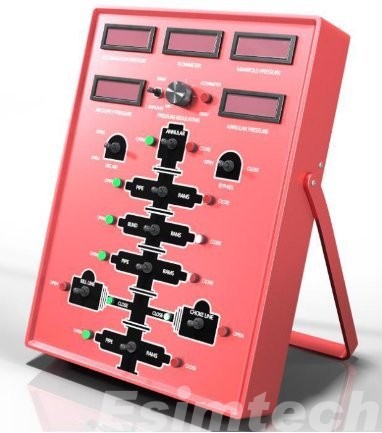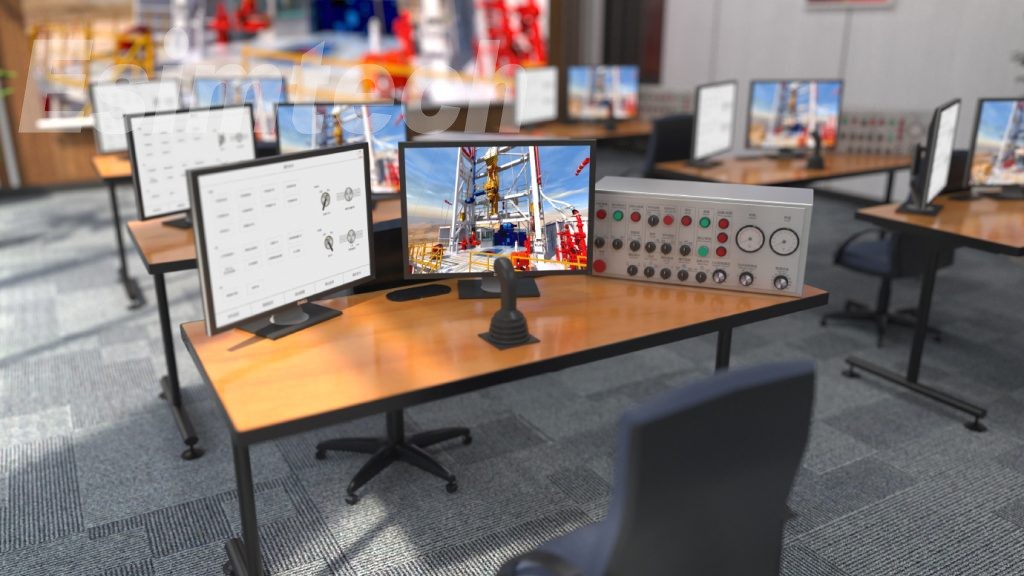For nearly a century, the oil and gas industry has been a linchpin of the global economy, providing the essential energy resources that drive our modern world. Within this vast enterprise, a realm of innovation and technology has given rise to enhanced oil drilling instruments, the unsung heroes facilitating the extraction of hydrocarbons from deep beneath the Earth's surface. This essay delves into the captivating domain of oil drilling tools, exploring their evolution, diverse types, groundbreaking innovations, and crucial roles in the oil and gas extraction process.

Evolution of Oil Drilling Tools
The evolution of oil drilling tools mirrors the advancements in the oil and gas sector, progressing from rudimentary manual methods to highly sophisticated, computer-controlled technology.
Rotary Drilling:
In the late nineteenth century, rotary drilling emerged as a transformative method. Utilizing a rotary bit attached to a drilling string, this approach facilitated faster and deeper drilling, unlocking previously inaccessible oil deposits.
Tri-cone Bits:
In the early twentieth century, the introduction of tri-cone bits marked a significant shift. These bits, with three revolving cones featuring teeth, revolutionized drilling by crushing and drilling through rocks more efficiently than previous designs.
Diamond Bits:
Mid-twentieth century saw the advent of diamond drill bits, incorporating industrial-grade diamonds for enhanced precision and durability, especially in challenging rock formations.
Key Oil Drilling Tools in Modern Operations
Modern oil and gas extraction relies on a diverse array of advanced drilling tools and equipment tailored to extract hydrocarbons from increasingly challenging locations.
1. Drill Bits:
PDC (Polycrystalline Diamond Compact) Bits: Featuring synthetic diamond cutters, these bits are robust and efficient in drilling through hard rock formations.
Roller Cone Bits: Versatile and adaptable, these bits, with revolving cones and teeth, are well-suited for various drilling conditions.
2. Mud Motors (Positive Displacement Motors – PDMs):
These downhole devices transform hydraulic pressure from drilling fluid into mechanical energy to move the drill bit, providing precise drilling control, improved efficiency, and extended drill bit life.
3. Directional Drilling Tools:
Downhole Motors: Paired with Measurement-While-Drilling (MWD) systems, these tools enable operators to control wellbore trajectory, essential for reaching distant targets and drilling multiple branches from a single well.
4. Measurement-While-Drilling (MWD) and Logging-While-Drilling (LWD) Tools:
Providing real-time data on well conditions and geology during drilling, these tools enhance precision and decision-making in drilling operations.
5. Casing and Cementing Equipment:
Critical for well integrity and limiting fluid migration, proper casing and cementing are essential for well safety and environmental protection.
6. Top Drive Systems:
Motorized systems rotating the drill string from the top, improving efficiency and eliminating the need for manual pipe handling. The top drive simulators was created with the goal of training the functioning of the top drive device.It may provide training for all top drive operations as well as common accident handling.It can be utilized for driller/driller assistant, technician, and drilling team leader training.


7. Automated Drilling Rigs:
Equipped with advanced control systems and robotics, these rigs operate 24/7, enhancing safety and overall drilling efficiency.
8. Advanced Drill Pipe Materials:
Constructed from high-strength, corrosion-resistant materials, such as alloy steel or composite composites, modern drill pipes improve resilience and longevity.
9. Drilling Fluids and Mud Systems:
Formulated for optimal drilling performance and wellbore stability, advanced drilling fluids minimize friction, cool the drill bit, and remove cuttings from the wellbore.
10. Drilling Software and Data Analytics:
Sophisticated software aids in data analysis and decision-making, optimizing drilling parameters, detecting potential issues, and improving overall efficiency.
Challenges and Innovations for Oil Drilling Tools
The oil and gas industry faces a myriad of challenges, prompting continuous innovation for enhanced efficiency, safety, and sustainability.
Exploration and Reservoir Challenges:
Innovation: Advanced seismic imaging technologies, extended-reach drilling, and directional drilling enhance reservoir identification and access.
Environmental Concerns:
Innovation: Environmentally friendly drilling fluids, low-emission drilling technology, and environmental monitoring systems reduce the industry's impact.
Safety and Well Integrity:
Innovation: Blowout preventers (BOPs), managed pressure drilling (MPD) systems, and real-time monitoring technologies improve safety and well control.
Operational Efficiency:
Innovation: Automation, robotics, predictive maintenance, and data analytics optimize efficiency and reduce downtime.
Deepwater and Harsh Environments:
Innovation: Specialized equipment, subsea technology, and materials tailored for extreme conditions enable drilling in challenging environments.
Innovation: Drilling methods and equipment enhancements aid in meeting regulatory requirements, while digital reporting and monitoring systems ease compliance efforts. Energy Transition:
Innovation: Diversification into renewable energy, carbon capture and storage (CCS), and low-carbon research address the industry's long-term sustainability.
Geopolitical and Market Volatility:
Innovation: Risk mitigation, portfolio diversification, and operational improvements help navigate market changes and geopolitical uncertainties.
In conclusion, oil drilling tools have evolved into complex and high-tech equipment, driving the global oil and gas industry. Continuous innovation not only enhances hydrocarbon extraction efficiency but also contributes to the industry's sustainability and environmental responsibility. As the industry faces new challenges, the relentless pursuit of innovation remains critical for its continued success and adaptation to changing global dynamics.










Comments (0)